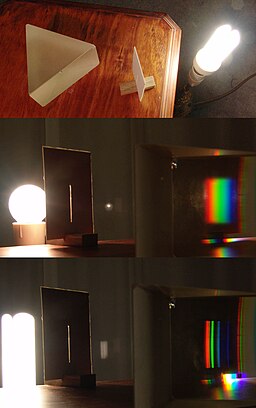When “color temperature” fails us.
A previous article talked a little about the confusion between color temperature and color “temperatures” where cool temperatures are ‘warm colours’ and ‘cool colurs’ are warm. Colour temperature is very useful to define the apparent colours of light. Light colour can be accurately reproduced throughout the universe if its colour temperature is stated.
This is why your camera allows you to set your white balance by entering the colour temperature of your light source. Your strobe manufacture probably states the colour temperature in °K right on the box, and incandescant lamps can be purchased by °K they will emit when operated at the correct voltage.
Before digital cameras, a photographer, knowing the colour temperature of the light source(s), could peruse the Kodak filter specification book and choose filters to alter the colours reaching the film to achieve his desired effect.
Color temperature is very useful when describing the colour qualities of the light emitted by something because it is heated to the point of emitting light. However, it is completely unsatisfactory for describing light from Light Emitting Diodes (LED). In my opinion, its use should cease immediately.
The problem is that ‘white’ LEDs are not white. They do not contain ‘all colours in equal amounts. Though they appear white to most people they are definitely not. Rather than get into a lot of scientific explanations, it is very easy to prove this to your self.
Get a magnifying glass and look at your colour TV, colour computer monitor, etc. Look closely and you will see there is no brown, magenta, pink, etc. There is only red, green, and blue! (OK, there is that one exception that we saw advertised on tv that actually added yellow emitters in addition to R, G, B.)
Now imagine that you used a selection of red lights and green lights to illuminate your photographic subject. How do you think a blue dress would appear to the camera? It would appear black. A blue dress in sunlight appears blue because it reflects more blue light than other colours; without blue light from your ‘flashlight’ there would be ‘no’ light to reflect, thus it would appear black.
Now, when we learn that ‘white’ LEDs actually work, we learn the problem. “White” LEDs appear white-enough for most purposes because they use ultra-violet light to stimulate phosphor to glow. This prinicipal, and the correct mixture of phosphorous compounds will generate light that looks ‘white’ to our eyes. However, the light is missing quite a bit of red.
We also suffer from this same problem with the ‘new’, ‘efficient’, compact fluorescent lamps.The top image shows the apparatus for this ‘home made’ spectrum scope. The middle image shows an incandescant lamp on the left, and on the right shows a ‘rainbow’ of light which smoothly emits every visible colour in equal amounts. The bottom image shows a “efficient” ‘compact fluorescent lamp’ on the left, and on the right, we can see that there is no orange, no yellow, no violet, no indigo, being emitted from this lamp.
The answer is called Colour Rendering Index (CRI)
This Wikipedia article explains CRI. and we will discuss it further in a future article.

